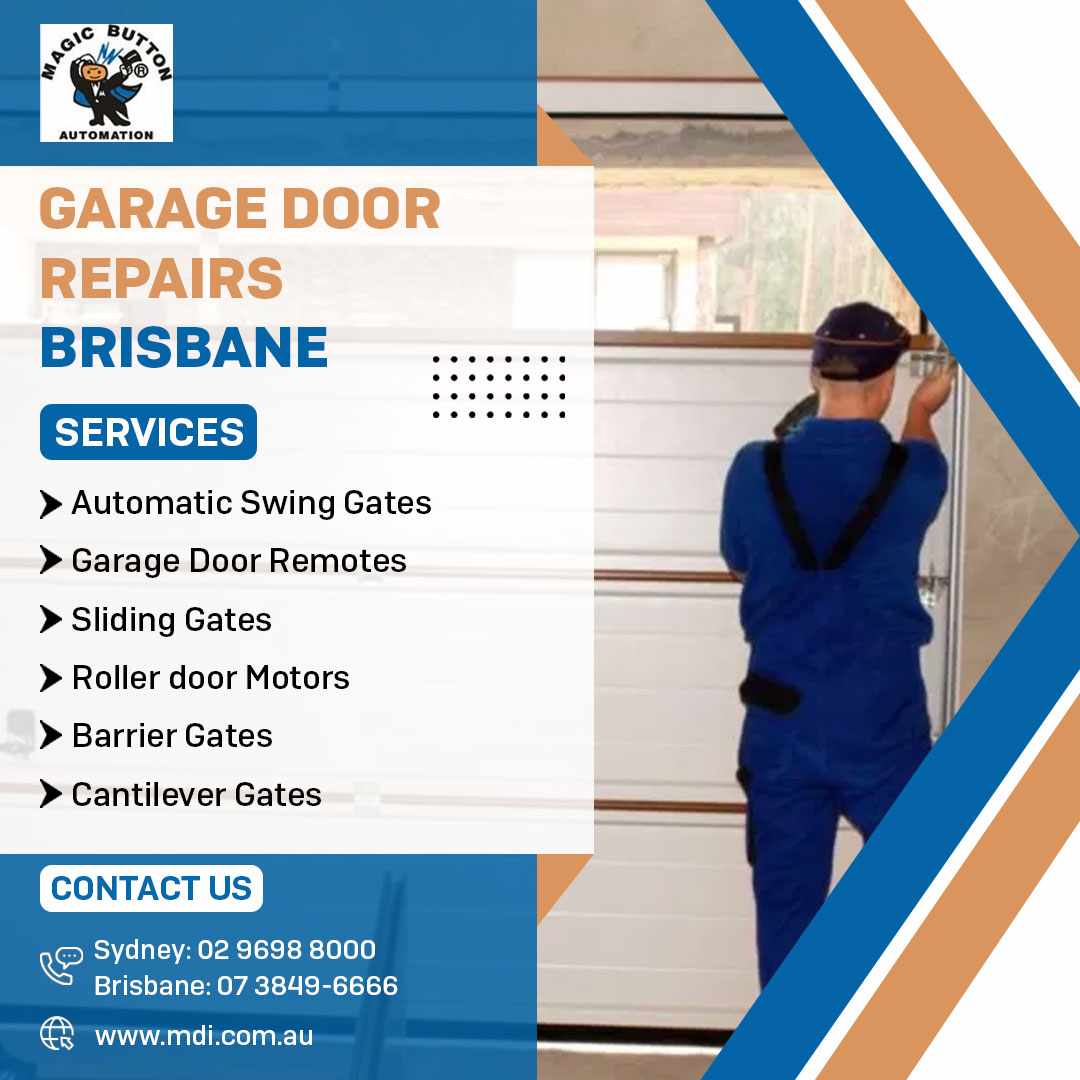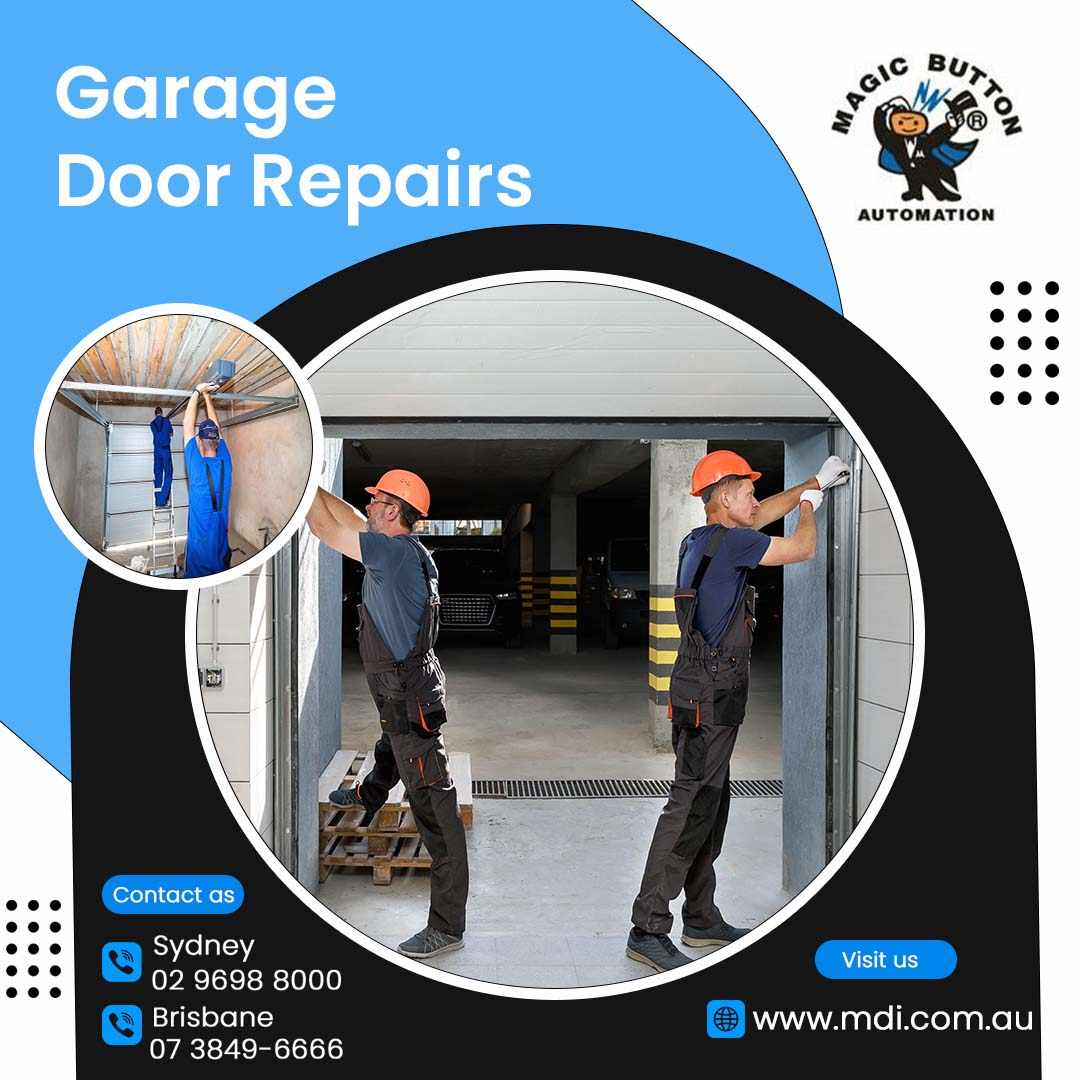
A functional garage door is a vital component of your home’s security and convenience. However, like any mechanical system, it can encounter problems over time. Understanding common garage door issues and their solutions can save you time and money while ensuring your garage door operates smoothly. In this article, we will explore some of the most frequent problems homeowners face and how to address them.
1. Garage Door Won’t Open or Close
Problem: One of the most frustrating issues is when your Garage Door Service refuses to open or close. This could be due to a malfunctioning opener, a broken spring, or an obstruction in the tracks.
Solution:
Check the Opener: Ensure that the opener is plugged in and the remote has working batteries. If the opener’s light is blinking, refer to the manual for error codes.
Inspect the Springs: Broken springs are a common cause of non-operational doors. If the springs are damaged, call a professional to replace them, as handling springs can be dangerous.
Clear Obstructions: Check the tracks for debris or objects blocking the door’s path. Clean and lubricate the tracks to ensure smooth operation.
2. Garage Door Makes Excessive Noise
Problem: A noisy garage door can disturb your household and signal underlying issues. The noise might result from loose hardware, lack of lubrication, or worn-out components.
Solution:
Tighten Loose Parts: Inspect the nuts, bolts, and hinges for looseness. Tighten them carefully but avoid overtightening.
Lubricate Moving Parts: Apply a high-quality lubricant to the rollers, hinges, springs, and tracks. Avoid using thick grease, which can attract dirt.
Replace Worn Components: If the noise persists, check for worn-out rollers or hinges and replace them as needed.
3. Uneven Movement or Sagging
Problem: If your garage door moves unevenly or sags on one side, it could indicate an issue with the tracks, springs, or cables.
Solution:
Align the Tracks: Use a level to ensure the tracks are properly aligned. Loosen the mounting brackets slightly, adjust the tracks, and retighten the brackets.
Inspect the Springs and Cables: Broken or worn springs and cables should be replaced by a professional to restore balance and safety.
Check Rollers: Replace any damaged or worn rollers that may be causing uneven movement.
4. Door Reverses Before Closing
Problem: If your garage door starts to close but then reverses, it’s likely a safety mechanism issue. This can be due to misaligned sensors or an obstruction.
Solution:
Clean and Align Sensors: Ensure the photo-eye sensors on either side of the door are clean and aligned. Wipe off any dirt or debris, and adjust them if necessary.
Remove Obstructions: Check the door’s path for objects that might trigger the safety sensors.
Test the Opener’s Force Settings: If the door still reverses, consult the opener manual to adjust the force settings.
5. Remote Control or Keypad Not Working
Problem: When your remote control or keypad fails to operate the door, it could stem from dead batteries, programming errors, or signal interference for Garage Door Repairs Sydney.
Solution:
Replace Batteries: Start by replacing the batteries in your remote or keypad.
Reprogram the Device: Follow the instructions in your opener’s manual to reprogram the remote or keypad.
Check for Interference: Ensure there are no electronic devices nearby causing signal interference. If necessary, reposition the antenna on the opener.
6. Garage Door Sticks While Moving
Problem: A sticking garage door can be caused by dirt buildup, lack of lubrication, or misaligned tracks.
Solution:
Clean the Tracks: Remove any dirt or debris from the tracks using a damp cloth. Dry them thoroughly afterward.
Lubricate the Tracks: Apply a silicone-based lubricant to the tracks to reduce friction.
Adjust Track Alignment: Ensure the tracks are properly aligned and secure them tightly to the wall or ceiling.
7. Broken or Frayed Cables
Problem: The cables responsible for lifting and lowering your garage door can wear out or snap over time, leading to operational issues.
Solution:
Inspect the Cables: Look for signs of wear or fraying. If you notice damage, refrain from using the door until the cables are replaced.
Call a Professional: Replacing garage door cables is a complex task best handled by a trained technician.
8. Door Opener Motor Runs Without Moving the Door
Problem: If the motor runs but the door doesn’t move, the issue might lie with the opener’s drive mechanism or a disconnected trolley.
Solution:
Check the Trolley: Inspect the trolley to ensure it’s properly connected to the opener’s carriage. Reconnect it if necessary.
Inspect the Drive Mechanism: Examine the chain or belt for damage or wear. Tighten or replace it if needed.
Call for Repairs: If the issue persists, seek professional assistance to inspect and repair the opener.
9. Door Seals or Weatherstripping Damage
Problem: Damaged seals or weatherstripping can allow drafts, moisture, and pests to enter your garage.
Solution:
Inspect the Seals: Check the bottom seal and side weatherstripping for cracks or gaps.
Replace Damaged Parts: Purchase replacement seals or weatherstripping from a hardware store and install them to improve insulation and protection.
10. Manual Operation Fails
Problem: If you can’t manually open your garage door, the issue may involve the emergency release mechanism or a locked door.
Solution:
Check the Emergency Release: Pull the release cord to disengage the opener and try lifting the door manually. If it still doesn’t budge, inspect for obstructions.
Inspect for Locks: Ensure the door’s manual locks are disengaged.
Call a Technician: If manual operation continues to fail, consult a professional to diagnose the problem.
Final Thoughts
Regular maintenance and prompt attention to Garage Door Repairs issues can extend its lifespan and ensure safe operation. While many problems can be resolved with simple fixes, some require professional intervention. If you’re unsure or the repair involves potentially dangerous components like springs or cables, don’t hesitate to call an expert. Taking care of your garage door today can prevent costly repairs and disruptions in the future.










.jpg)
Write a comment ...